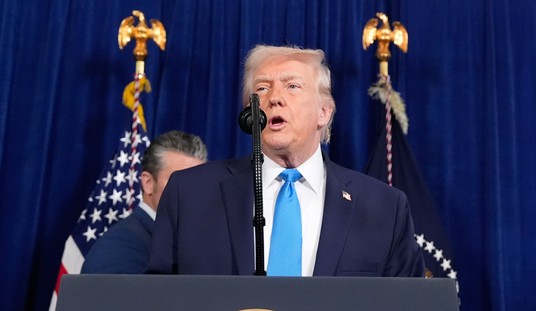That time Obama took a selfie with two fellow world leaders at Mandela’s memorial service http://t.co/vRXRRQGQQn pic.twitter.com/9yQwGmAhCC
— Huffington Post (@HuffingtonPost) December 11, 2013
“Obama/Cameron Selfie Photographer to TNR: I’m Ashamed of Mankind,” the New Republic reports today:
Roberto Schmidt is the AFP photographer, currently the agency’s chief photographer for South Asia, who captured that infamous snap. Reached by phone in South Africa, he sighed heavily. “Why do people care about a selfie?” he said. “This is a sad reflection of our society.” He’d gone to photograph the memorial with a team of ten photographers. They moved some 500 images on the wire. “Good images, nice, strong images,” he said. “Images of South Africans dancing, smiling, chanting, which is the way they express mourning for a man they consider to be their father.” It was a long ceremony; he took many photographs of world leaders giving speeches and South Africans grieving. And suddenly he saw the Danish prime minister lift her phone to take a photo of her face alongside seatmates Obama and Cameron. Schmidt dutifully clicked away. “They’re in front of you, this happens, you take the picture,” he said. “But I saw so many good images from that memorial. And the picture that’s getting played is the president in a selfie. That’s kind of a bummer.”
“That’s kind of a bummer.” Let’s translate that from MSM to English: I broke news — I’m a successful wire service photog! But I broke news that made Mr. Obama look bad. I’ll never hear the end of this from my peers standing around the Monsieur Coffee machine in the AFP break room in their Paris HQ. I am a failure of a photographer. I’ll never be stupid enough to break news again. Mon Dieu! Where did it all go wrong?
This isn’t the first time that a wire service photographer was ashamed of a photo he captured, but back then, the stakes were a bit higher. Eddie Adams, the AP photographer who took the iconic photo of South Vietnamese General Nguyen Ngoc Loan executing a prisoner in 1968, was ashamed of how it distorted an obscure man’s reputation and made him infamous throughout the world:
Adams wrote in Time magazine, “The general killed the Viet Cong; I killed the general with my camera. Still photographs are the most powerful weapon in the world. People believe them, but photographs do lie, even without manipulation. They are only half-truths. What the photograph didn’t say was, ‘What would you do if you were the general at that time and place on that hot day, and you caught the so-called bad guy after he blew away one, two or three American soldiers?’”
The picture that Adams took, the picture that CNN thinks is such an atrocious and ignoble deed, ruined Loan’s life. More to the point, it didn’t expand on “our right to know.” It didn’t answer questions, or give us the story. It deceived. It gave no context. It confirmed the biases of the anti-war journalists, and they used it to further their agenda.
Loan fled Vietnam during the fall of Saigon for the US. He eventually moved to Burke, Virginia. He tried to open a restaurant in Northern Virginia, but when the identity of its owner became known, it closed down. Protestors circled the establishment venting their fashionable, safe, outrage.
The two men stayed in touch, and Adams tried to apologize many times.
“He was very sick, you know, he had cancer for a while,” he told NPR. “And I talked to him on the phone and I wanted to try to do something, explaining everything and how the photograph destroyed his life and he just wanted to try to forget it. He said let it go. And I just didn’t want him to go out this way.”
So one wire service photographer is ashamed that he took a photo that permanently demonized someone heretofore unknown to the world, the other is a wannabe court eunuch ashamed that he made the most powerful man in the world look silly. Which rather nicely sums up the stenographic attitude of today’s left-wing palace guard “journalists.” (But then, the media never really bought into that century-old nonsense they used to tell their readers about “comforting the afflicting and afflicting the comfortable,” did they?)
And of course, AFP’s man on the scene is blaming his readers — the customers — for how they reacted to the photo. “Why do people care about a selfie?” Schmidt told TNR. “This is a sad reflection of our society.” When the Washington Post dropped the role of ombudsman because it was tired of having to deal with reader complaints about its myriad errors and distortions, the Weekly Standard correctly noted that only in the world of news media is the customer always wrong. Or as the late Andrew Breitbart once said to the MSM, “It’s not your business model that sucks, it’s you that sucks.”
Oh and apropos of nothing, “mankind” is TNR’s paraphrase; it doesn’t appear in quotes in the body of their article. Has that word been retconned back into the latest edition of the Newspeak Dictionary? Do we have the blessings of far left to use that word again?










Join the conversation as a VIP Member